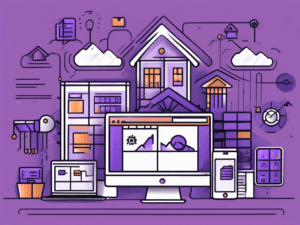Real-Time Messaging
02 Feb 2024 By: Michael Kansky
Updated
One of the key elements of live chat services is real-time messaging. It means rapid communication of messages among users through an internet connection. This has changed the way businesses interact with their clients, giving them a means of fast and efficient communication.
Real-time messaging has become a critical tool for companies of all sizes and in all industries. It enables instant feedback, troubleshooting, and customer interaction. This article gives a detailed description of real-time messaging, including its definition, history, application, advantages, and technology involved.
Definition of Real-Time Messaging
Real-time messaging is a form of communication that allows users to send and receive messages instantly. Unlike traditional forms of communication such as email, which can have significant delays, it ensures that messages are delivered and received the moment they are sent.
This form of communication is usually used in live chat services, social media platforms, and other online communication tools such as, Facebook Messenger, iMessage, WhatsApp. t is characterized by its speed, efficiency, and ability to facilitate real-time interaction between users.
Components of Real-Time Messaging
Components of real time messaging includes the following:
- Sender
- Receiver
- Message
- Transmission medium
The sender is someone who initiates the conversation, while the receiver is the individual or entity to whom the message is directed. The message is the information being communicated, and the transmission medium is the platform or technology used to facilitate communication.
Another crucial component of real-time messaging is the server, which facilitates the transmission of messages between the sender and the receiver. The server receives messages from the sender, processes them, and then sends them to the receiver. This process occurs instantaneously, ensuring that messages are delivered in real time.
History of Real-Time Messaging
The concept of real-time messaging has been around for several decades, with its roots in the early days of the internet. The early types were basic and not as advanced as today’s platforms. However, they laid the groundwork for the development of modern systems.
One of the earliest forms of real-time messaging was the internet relay chat (IRC), which was developed in the late 1980s. IRC allowed users to communicate in real time via text-based channels. This was groundbreaking back then and led to the creation of advanced systems.
Evolution of Real-Time Messaging
Over time, real-time messaging has developed greatly and the appearance of new technologies means that more advanced and more user-friendly services become available. However, in the mid-1990s web based chat systems were developed which allowed users to talk to each other through the web browsers.
After social media represented itself in the early 2000s, real-time messaging became even more popular. Among other platforms, Facebook and Twitter introduced their own systems, which allowed their users to be in touch with their friends and followers instantly. At present, it is the industry norm on almost all social networking websites and online
Uses of Real-Time Messaging

Real-time messaging is applicable in excess of situations including personal and professional areas. In interpersonal communication, it is used for immediate conversation between people whether they are in the same location or thousands of miles away from each other. It gives users the ability to exchange thoughts, ideas, and experiences in an instant, thus, creating a sense of sudden connection.
The professional use of real-time messaging is for communication among team members, departments, and even for communication between companies. It enables real-time feedback, teamwork, and problem-solving, making it indispensable for both small and large businesses. Also, it is frequently utilized in customer service, thus companies give instant assistance and support to their buyers.
Real-Time Messaging in Customer Service
Real-time messaging is one of the most important part of customer service. Multilingual live chat services are utilized by businesses to offer quick support to their customers by answering questions, resolving issues and giving out information instantly in real time. This not only enhances customer satisfaction but also makes operations more effective, since though one agent can speak to just one customer at a time on the phone, they can handle many chats at once online.
It also enables businesses to provide a personalized service to clients. The chat information can be used by the customer service representatives to provide more customized answers, which will improve accuracy and assistance. This individualization improves the user’s service quality and their satisfaction.
Benefits of Real-Time Messaging
Real-time messaging offers numerous benefits, both for individuals and businesses. For individuals, it provides a convenient and efficient way to communicate with others. It allows instant communication, making it ideal for sharing ideas, collaborating on projects, and staying connected with friends and family.
Trending now
Real time messaging is crucial for modern businesses, offering streamlined communication and improved collaboration. With mobile features for seamless communication and group chat functions for easier collaboration, it ensures prompt responses and boosts productivity. Moreover, it saves costs compared to traditional communication methods. In essence, instant messaging is essential for driving productivity and success in businesses today.
For businesses, it can enhance communication, collaboration, and customer service. It allows businesses to provide immediate support to their customers, improving customer satisfaction and loyalty. Additionally, it can improve internal communication and collaboration, making it easier for team members to work together and achieve their goals.
Effectiveness and Performance
One of the main benefits of real-time messaging is its ability to increase efficiency and productivity. By allowing for instant communication, it eliminates the delays associated with traditional forms of communication like email. This can save businesses significant amounts of time, allowing them to respond to customer inquiries, resolve issues, and make decisions more quickly.
In addition, instant messaging enables one to perform several tasks at a time. In contrast with phone calls, messaging enables the users to have several conversations at the same time. This can lead to very high productivity.
Technology Behind Real-Time Messaging
Real-time message technology is rather complex, and it consists of several components. It’s a system on a server used for users to exchange messages. This process occurs in a flash, thus, allowing messages to be sent in real time
Technologies like WebSocket, HTTP/2, and Server-Sent Events (SSE) make real-time messaging possible. They allow the client and server to communicate both ways, making it easy to send messages instantly.
WebSocket
WebSocket is an application protocol which permits that the client and the server can communicate in both directions. That means, both the client and the server can transmit and receive data concurrently, thus supporting real-time communication. WebSocket is commonly used in real-time messaging systems owing to its effectiveness and stability.
When a WebSocket connection is established, the client and the server exchange data via a single, long-lived connection. This eliminates the need for multiple HTTP requests, reducing latency and improving performance. Furthermore, WebSocket supports both text and binary data, making it versatile and suitable for a wide range of applications.
HTTP/2
HTTP/2 is a major revision of the HTTP protocol, which is the foundation of any data exchange on the web. One of the key features of HTTP/2 is its support for multiplexing, which allows multiple requests and responses to be sent over a single TCP connection. This can significantly reduce latency, making it ideal for real-time messaging.
Furthermore, HTTP/2 supports server push, which allows the server to send data to the client without a request from the client. This can improve performance and efficiency, especially in real-time messaging systems where the server needs to send messages to the client as soon as they are received.
Future of Real-Time Messaging
The outlook for real-time messaging is bright as technology progresses and the demand for immediate communication rises. With fast internet speeds and new technologies emerging, its systems are anticipated to be much more efficient and user-friendly in the future.
Moreover, as artificial intelligence and machine learning technologies are advancing, further features are anticipated to be introduced in the system. For instance, chatbots and virtual assistants could help automate a part of the customer service, making it even more efficient and effective.
Integration with Other Technologies
We can expect real-time messaging to work and be integrated with other technologies in the future. For example, VR/AR can be one of its carriers to upgrade the communication experience.
Additionally, it can be integrated with Internet of Things (IoT) devices allowing the user to manage their devices through messages in real time. This can open a brand new range of real-time communication and interaction opportunities.
Increased Use in Business
Receiving profits from the use of real-time messaging by business, it will get more and more spread among the business community. This technology is capable of enhancing communication, cooperation and customer service, and, thus, it has become essential for companies of whatever size.
As the advantages get more and more appreciated by the businesses, its application in the business world will grow. It makes communication, teamwork, and customer service more efficient, which makes it a tool that can be used in any business irrespective of size.


